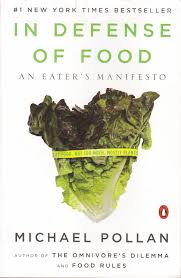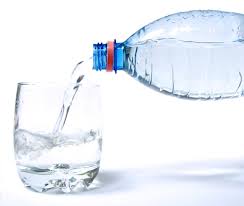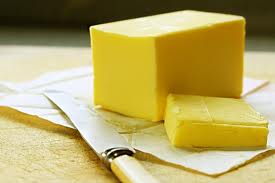 Surprisingly, many Canadians don’t bother reading labels on the food products they buy. Even for those who do read them, they are often confused.
Surprisingly, many Canadians don’t bother reading labels on the food products they buy. Even for those who do read them, they are often confused.
In general, food manufacturers are ashamed of many of the ingredients they put into our food so they do everything in their power to mislead consumers.
Here are three examples of ingredients that are prevalent in processed foods: Monosodium glutamate or MSG, high-fructose corn syrup or HFCS and trans fats. Most people know that it’s best to avoid consuming these “foods” but they are unaware of the pseudonyms that are employed to fool us into complacency.
Monosodium Glutamate: MSG is added to enhance the flavor of food. It is common in restaurant foods, canned soups and dinners, frozen dinners and many other processed products. Why it’s not good for us: MSG is a neurotoxin, exciting areas of the brain artificially and causing severe reactions in some people. Others have minor reactions.
Here is list of the names by which it can hide on food labels:
annatto, autolyzed yeast, barley malt ,brown rice syrup, calcium caseinate, carrageenan, citric acid, dry milk solids, glutamate, glutamic acid, guar gum, hot dog analogs, hydrolyzed corn gluten, hydrolyzed protein, hydrolyzed vegetable protein, isolate, lecithin (if from hydrolyzed soy products), malt extract, malt flavoring, maltodextrin, milk powder, monopotassium glutamate, natural chicken, beef, pork flavoring, bouillon & broth, natural flavor(s) & flavoring(s), protease, protein enzymes, protein fortified, rice syrup, seasoning, smoke flavor or flavorings, sodium caseinate, soup broths, bouillon, soy protein, soy sauce, spice, texturized vegetable protein, whey protein, yeast extract, yeast food, and anything enzyme modified, soy fortified and fermented, could be hiding MSG.
High Fructose Corn Syrup: HFCS is a cheap alternative to sugar made by adding chemicals and enzymes to and significantly altering corn. Manufacturers love it because it is sweeter than sugar so they need less, it’s cheaper than sugar (largely because of government corn subsidies and taxes on sugar imports), and there is some evidence that it is more addictive than sugar, ensuring repeat business.
Why it’s bad: Experiments on rats show the message of satiety usually sent to the brain after sugar consumption is altered or non-existent from HFCS. This explains the addiction and the over-consumption of products containing HFCS and why this product is suspected of significantly contributing to the obesity epidemic.
Studies also suggest it often contains mercury, for which there is no safe level.
The HFCS industry touts it as “natural” because it is made from corn, which is a very bad joke. By the time corn is bombarded with various chemical processes, it is far from natural.
Here is the list of HFCS aliases:
agave syrup (but not always), chicory, corn syrup, crystalline fructose, dahlia syrup, dextrose, fruit fructose, glucose syrup, glucose-fructose syrup, glucose/fructose, high maltose corn syrup, inulin, isoglucose, maize syrup, maltodextrin, syrup powder, tapioca syrup. Corn producers have recently petitioned the FDA for the right to call it “corn sugar”.
Beware that unscrupulous producers add HFCS to honey and maple syrup. Know your suppliers!
Trans fats: Because of recent media coverage, most people know that they should avoid trans fats but they don’t know why or what they really are.
Decades ago Ancel Keys hypothesized that the consumption of saturated fats, mostly from animals, had a direct effect on heart disease. Keys selectively used the data he collected in six countries (ignoring data from 22 others that didn’t fit his theory) to prove his foregone conclusion that saturated fats are unhealthy.
In collusion with governments and health care providers, manufacturers rushed to replace animal fats with cheaper vegetable oils, chemically treated to be solid at room temperature and therefore mimic animal fats. They enjoyed the added bonus of longer shelf life for their products, reducing costs and food waste.
Unfortunately the human body does not recognize these fats as real food and doesn’t digest them properly. Ironically they are thought to cause heart disease, diabetes and cancer and contribute to the rise in obesity in North America.
There is no safe level of trans fat consumption. In Canada, if a product contains less than two grams of trans fats per serving, the manufacturers can claim that it’s trans fat free. Of course they often base their claim on ridiculously small serving sizes: ever see anybody eat just ONE cookie?
Trans fat pseudonyms include:
edible oils, hydrogenated vegetable oil, margarine, non-hydrogenated plant shortenings made from naturally saturated palm oil, coconut oil and palm kernel oil, partially hydrogenated vegetable oil, partially-hydrogenated plant oils, shortening. Most fried food contains trans fats as high heat also alters the composition of oils.
Avoiding these three substances is easier if you stick to whole real food. Prepare larger quantities of homemade foods and freeze extras in individual portions to replace canned and frozen dinners. Replace prepared foods with fresh vegetables, salads and fresh fruit.
Use real oils like coconut oil and butter for frying, (which should be done infrequently) and use extra-virgin olive oil and raw nut oils in salad dressings and marinades.
Honey, agave and stevia are the best sweeteners to use. Better still, satisfy your sweet tooth with fresh fruit, which comes with the added bonus of fibre, and vitamins and minerals to help your body manage the sugars they contain.
When dining out ask for MSG, trans fat, and HFCS-free choices or frequent those establishments whose policy is to serve whole, real food.
Happy eating!
Sources for this article include: Google, Natural News.com. Wikipedia.com








